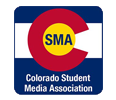The Six Shot Story – distance learning assignment for Video Broadcast Journalism
Six Shots, Six Words. Video story assignment inspired by Don Goble, Laude HS
Objective: Write and create your own six-word video story, in only six unique shots
Prompt: Tell a story in six words and six unique shots of “the most interesting/ random thing I’ve done to stave off boredom during this Quarantine Life.”
VIDEO from Mr. Dawkins explaining the assignment:
No two shots can be alike; in other words, you must use six different shots from six different camera angles. Every edit must be from a different distance. You will be marked down for two shots in a row that are the same or similar.
Prompt: Tell us something about the most interesting/ random thing you have done to stave off boredom during this Quarantine Life in six unique shots and six words.
First watch sample six-shot stories here- please watch these they are great examples of the style I am looking for. Do this, but add your own flavor! : https://www.lhstv.net/6-word-story-6-shot-video.html
How will I be graded? Look at the rubric here which is what will be used to grade your video story: Rubric; Six Shot Story.pdf
When is it due? Anytime before Friday, April 3rd. Please get it in by then! Thanks –
Optional: Here is the Storyboard you can use to plan your six-shot-story. You don’t need to turn it in. You can send it to Mr Dawkins for feedback, but you don’t have to use it: Storyboard- six shot story .pdf
Step 1: Plan out your six words and your six shots. Use the Storyboard if you want or do your own thing, but definitely make a plan.
Step2: Shoot all of your shots on your phone, iPad, or camera
Step 3: Use iMovie on iPad to edit, or if you have filled out our Online Learning Assignment #1- Adobe PErmission Form and submitted it to me via email and heldesk@regisjesuit.com -Then you have the Adobe Creative Cloud Suite at home including Adobe PRemiere. The iPad version of Premiere is called “Premiere Rush.” Anyhow, use iMovie as a fallback. Let me know if you have any questions about installing the Adobe Cloud at home. You can have the entire suite (Premerie, photoshop, all of it at home through May 31) !
Step 4: Export and submit the final video to this assignment. .MOV and /MP4 Works. If you have issues, just let me know.
Requirements:
- Must have a plan (storyboard) – due by end of class today
- Final video must 18-30 seconds total
- Must tell a story about you and give the audience a feel for your personality
- Each shot must be unique
- Use a variety of types of shots — Choose from any of the following suggested camera shots when creating a video:
Extreme wide
Establishes the setting of the environment or location of the subject. Camera is zoomed out as far as possible and placed a great distance from the subject to capture.
Wide
Zoom in a bit from the extreme wide shot. Place the subject head to toe in the viewfinder, with very little to no room above the head or top of the subject. Make sure not to cut off the bottom of the subject.
Medium
Shows half of the subject; up, down, left, or right. Offers the viewer more detail in the frame.
Tight
Zoom in on the shot and frame one aspect of the subject, offering the viewer greater detail of the subject.
Extreme tight
Zoom in as far as the camera can go and place the camera extremely close to the object. The image will show incredible detail of the subject, and the viewer may not be able to discern what the object is.
Low angle
Camera shows the subject from below, giving the impression that the subject is more powerful or dominant. Place the camera on the tripod as low as possible and aim up, or hold the camera on the ground and tilt up.
High angle
Camera shows the subject from above, so angle the camera down toward the subject. This has the effect of diminishing the subject, making them appear less powerful, less significant, or even submissive. Raise the tripod as high as it can go, or hand-hold the camera as high as you can while still maintaining a slight angle down.
Bird’s-eye view
Camera is directly above, simulating the view of a bird flying in the air looking straight down with no angle. This completely different and somewhat unnatural point of view can be used for dramatic effect or for showing a different perspective.
Canted
Camera is purposely tilted to one side so the horizon is on an angle. This angle creates an interesting and dramatic effect, suggesting distortion or chaos to the viewer.
Eye level
This is the most common camera view, which offers the viewer a real-world angle that we are all used to. It shows subjects as we would expect to see them in real life. It is a fairly neutral shot.
Note: Avoid eye-level shots if possible for this activity! Since this is the most common shot viewers recognize,
MORE — sample stories:
